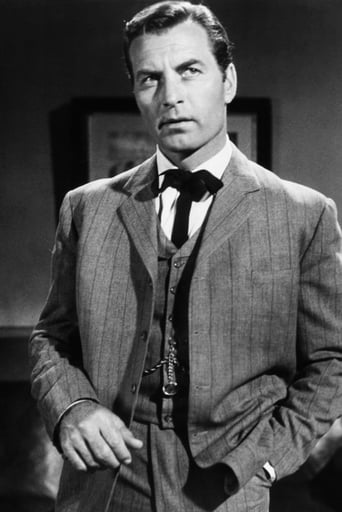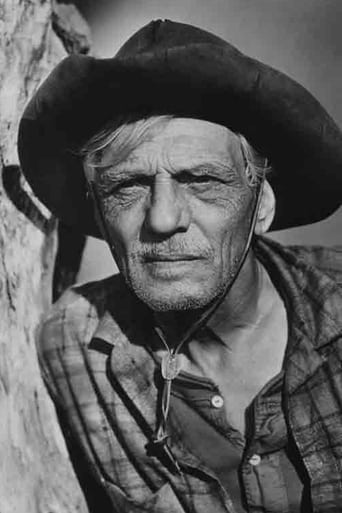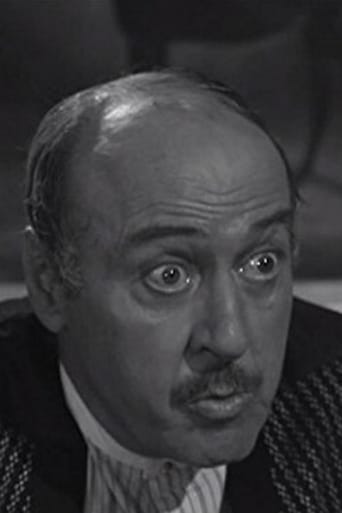ManiakJiggy
This is How Movies Should Be Made
FuzzyTagz
If the ambition is to provide two hours of instantly forgettable, popcorn-munching escapism, it succeeds.
SeeQuant
Blending excellent reporting and strong storytelling, this is a disturbing film truly stranger than fiction
Invaderbank
The film creates a perfect balance between action and depth of basic needs, in the midst of an infertile atmosphere.
Michael O'Keefe
An old western, that isn't that old. In the late 1950's PAWNEE looked old and somewhat modern. A young white boy named Paul Fletcher(George Montgomery)is raised by a Pawnee Chief Wise Eagle(Ralph Moody). Blue eyed Pale Arrow reaches manhood, and still a favorite of the Chief, is ejected from the tribe. His future and loyalties will become tested when he takes a job as a scout for a wagon train. He will be taking wagons of white people into Indian Territory. Tensions rise when peace-loving Wise Eagle dies leaving a war-minded Crazy Fox(Charles Horvath)taking over leading the tribe. Crazy Fox just happens to be Paul/Pale Arrow's archenemy. Any peace on the prairie will be blemished.The cast also features: Bill Williams, Lola Albright, Robert Griffin, Kathleen Freeman, Dabs Greer, Bill Coontz and Francis McDonald.
Ozirah54
While much of this movie progresses at an anemic pace and much of the ending is lifted out of at least one other cavalry versus Indians movie, the epic confrontation of Pale Arrow (George Montgomery) versus Crazy Fox (Charles Horvath) offered, for me, a stirring finish.All during the film, Crazy Fox has nourished a hatred against Pale Arrow, a man brought up by the tribe. Pale Arrow was favored by Crazy Fox's own father, stole his maiden, Dancing Fawn, and seems to have bested him throughout his life.Now, Pale Arrow, who Crazy Fox thought had been killed at a Pawnee torture stake, spies the chief and a few braves in the midst of a great battle. Pale Arrow rides toward the chief and the epic, final fight is about to commence.They ride toward each; their horses collide. Dismounted, they tussle, roll over each other, and fall into a nearby river. At first, Crazy Fox has the upper hand, beating Pale Arrow with a tomahawk as the swift current drags them away. But, then, they return to calmer water.We see Crazy Fox only from the back now, his hair unbraided, his weapon gone, his skin shimmering from the dunking in the water. Pale Arrow slugs him and Crazy Fox falls back into the water. The proud, valiant, determined, bold, and adventurous Pawnee war chief tries to regain the initiative but cannot. A second punch and he is knocked down to the bottom of the river, near the bank. Pale Arrow jumps on him, holds him down, and drowns him as Crazy Fox desperately tries to save his audacious but malevolent and ultimately doomed life. His existence, his leadership of the tribe, his quest for revenge are all about to come to termination. As the background music reaches its crescendo, Pale Arrow strangles Crazy Fox and the Pawnee's face cannot be seen. Only the breastplate covering his magnificent Pawnee chest is still visible. Crazy Fox is dead.The scene then switches to the final moments of movie.
Poseidon-3
This is just one in a huge string of westerns that Montgomery made over the course of his career. This one, however, falls pretty near the bottom of the heap in quality and prestige. In it, Montgomery plays a white man raised by Indians. (Hilariously, even though he has been reared among the Native Americans his entire life, his hair isn't as long as theirs and it's parted on the side just as it would be in any other film, but with two braided pig tails down either side!) Soon after he saves Albright and her crusty father from his own people's attack, he decides to rejoin the white race. This agonizing adjustment consists of him wiping off his face paint, removing the faux ponytails and changing clothes.......VOILA! He's white! Through plot contrivance, he winds up as the scout for Albright's wagon train (which is chock full of annoying stock characters who are shown in long shots knocking violently over rugged terrain, yet in the close-ups are barely rocking on a static, stationary prop wagon!) Chief among the silly characters is a frail, ancient pioneer wife who is pregnant with her first child. She is shown in shawls, etc...but occasionally can be seen in cinch-waisted dresses which reveal no belly yet gives birth right after! She and Freeman (later famous for her comedic gifts) and Albright (who still looked human at this stage in her career before turning her skin brown and her hair white) take time out from getting slaughtered by the Indians to buy themselves some new dresses in a nearby town. "Little House on the Prairie" fans will recognize the pregnant lady's husband as the Reverend from the later TV series. Eventually, Montgomery finds himself caught in the middle of the distrusting wagon train participants and his Indian family (incited by a particularly irritable "brother" who is out for blood.) All of the battle sequences are lifted from another film. This is ludicrously brought home when the screen is filled with epic numbers of settlers and warriors but the stars are behind a rock or off to the side watching! Unless it is to poke fun at the sorriness of the production, there's not much reason to watch, though Montgomery does display a still fit figure during some of his scenes as a Pawnee (notably in a "washing up" shot as observed by Albright.)
Michael Lefkowitz
Pawnee is a cliche ridden mid-fifties Western made bearable by a good cast, professional direction, and some decent scenery. George Montgomery stars as a white man raised by the Pawnee Indians who must decide whether to remain an Indian and become chief of the Pawnee nation or return to his roots and save a wagon train from an Indian attack. The basic premise is old hat, and the film is loaded with stock characters includng the wise old Indian chief who seeks peace with the whites and the younger, violent war-mongering chief who seeks to kill the settlers (and his long despised white "brother" and rival Goerge Montgomery), the kindly and wise wagon train doctor, the wagon master who also becomes a rival of Montgomery for the love of a whte woman, a crusty, but lovable old coot of a settler, and so on. The film is juvenile and simplistic, but is watchable thanks to a good cast of old pros, fast and knowing direction, and excellent color photography of the scenic west. George Montgomery was a solid, leading man in many westerns of the fifties, and turns in his typically solid performance as the hero here. He is ably supported by such stalwarts of fifties westerns as Robert Griffin, Francis McDonald, Dabbs Greer, and Bill Williams. Lola Albright, an excellent, but underrated actress who later costarred on TV's Peter Gunn, gives a good performance as a yong woman traveling with the wagon train, who comes between Bill Williams, the wagon master, and Montgomery. It is noted that the lead Indian parts are played by caucasion actors and Native Americans are used almost exclusively as extras. The direction is by George Waggner, who directed the Wolfman and other horror films at Universal in the forties. Waggner is an old pro who moves the script along quickly and makes the cliches bearable while keeping the cast from going over the top in roles that could have easily become laughable. There is nothing new here, but it is a competent film which should mildly entertain western fans and youngsters who have never sat through a western programmer from the fifties.




